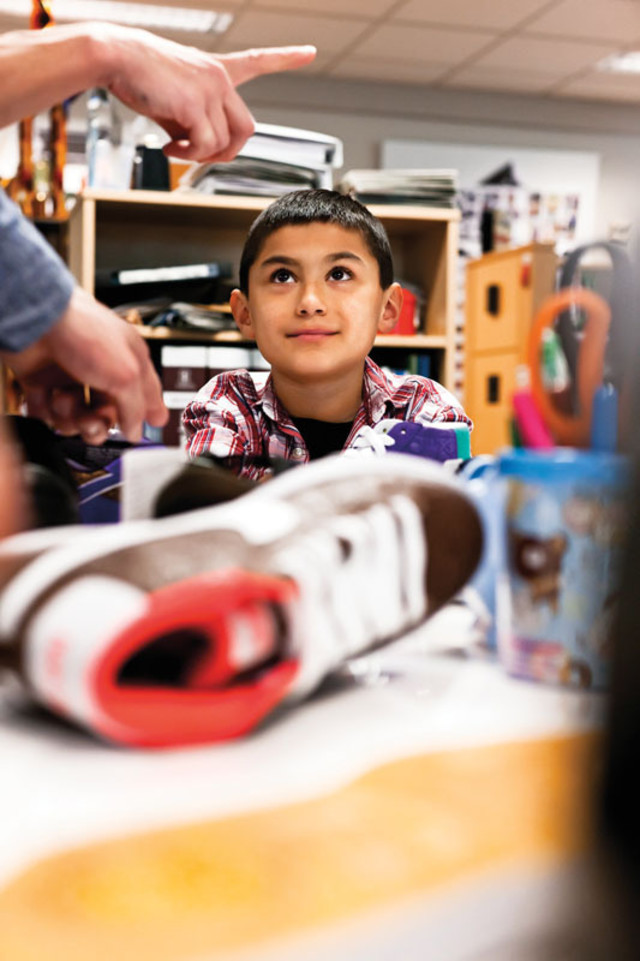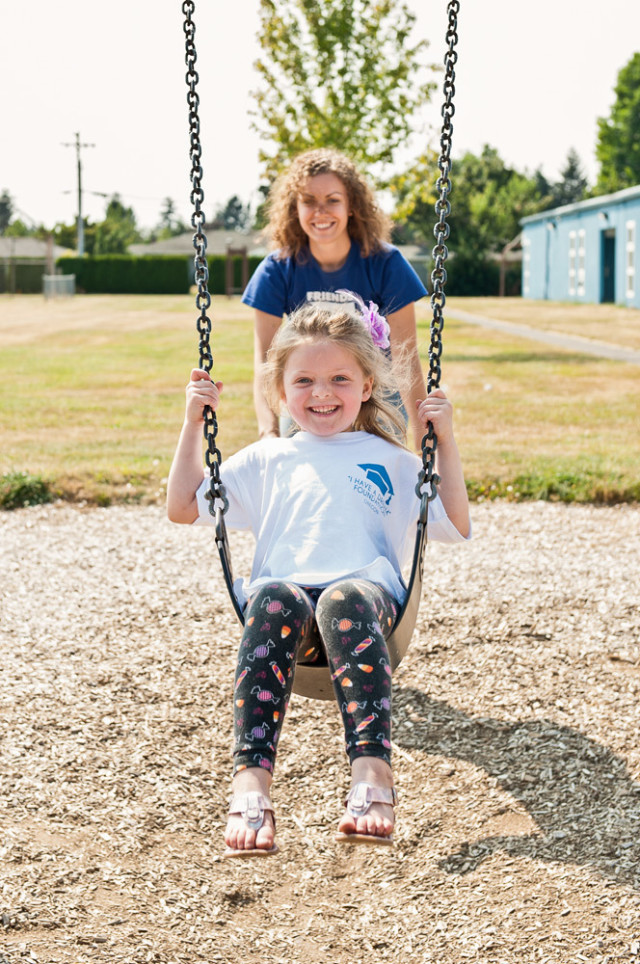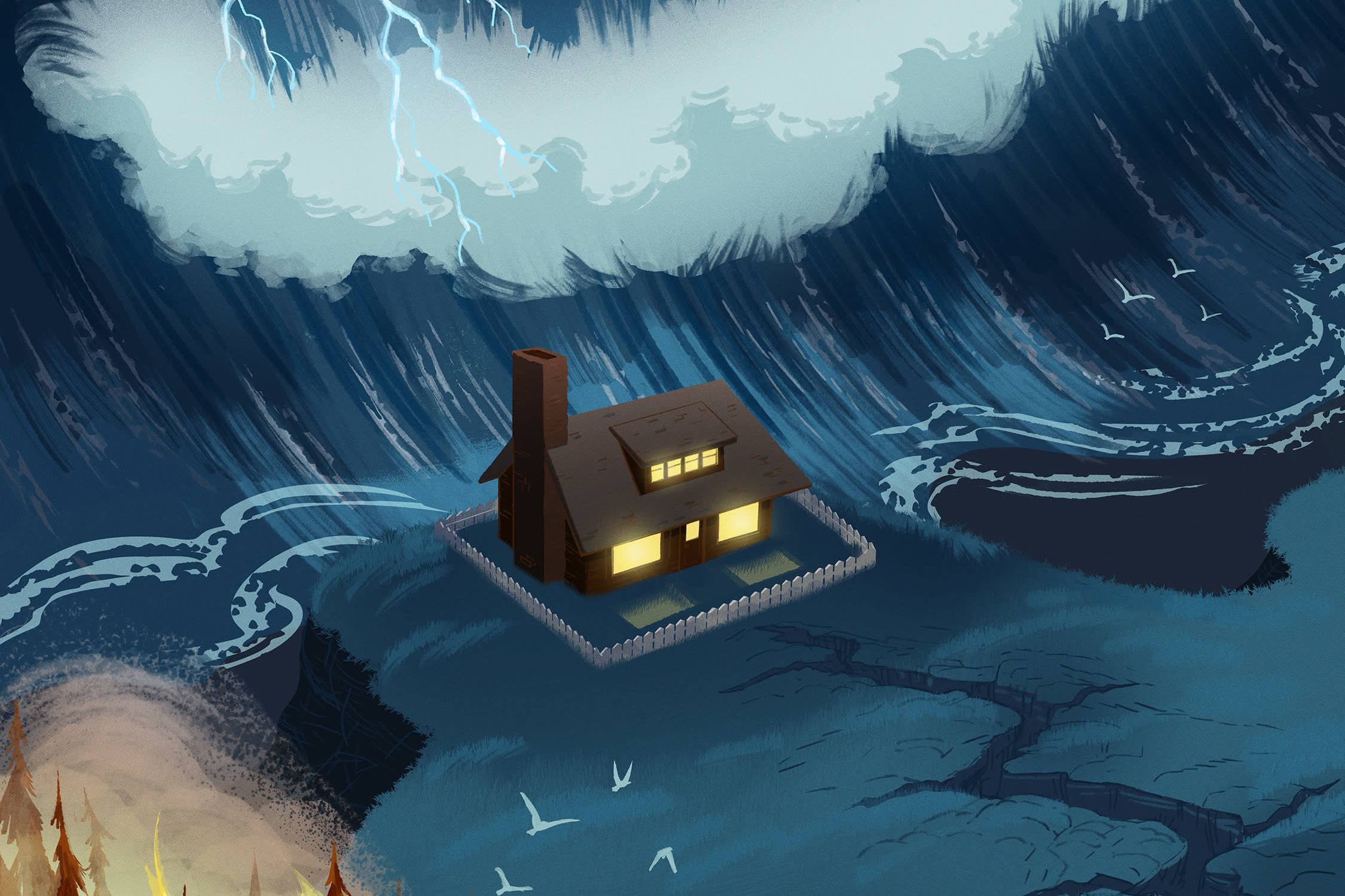Game-changing Project
2014: All Hands Raised
In 2007, a study revealed that only half of Multnomah County students who entered ninth grade graduated from high school in four years. Dan Ryan, CEO at All Hands Raised—formerly the Portland Schools Foundation, the independent fundraising group for the city’s public education—wanted to act, fast. “The status quo was not giving our kids what they needed,” he says, “especially children of color and those living in poverty.” So he assembled a team of community leaders to figure out how things could change.

Image: Courtesy All Hands Raised
The big issue: Kids spend only about 18 percent of their time in the classroom, but their whole lives affect their educational success. All Hands Raised needed to adopt a strategy to fill that gap and keep kids on the right path. The organization now runs five distinct “collaboratives”: coalitions of educators, businesses, and organizations, each tailored to a specific educational or social problem that derails kids on the path from kindergarten to college.
“We had been focused solely on what was going on inside the classroom,” Ryan says. “We had to start meeting the schools on their edges to improve the lives of our kids.”
Inside the Collaboratives
Early Learning Multnomah
The Mission: Developed to aid young students’ first foray into education, Early Learning Multnomah includes events, home visits, and a “Kindergarten Transition Toolkit.” The program also encourages parents to register children for kindergarten early, so that students’ needs can be addressed before the first day.
The Result: In two years, on-time kindergarten registration has increased from 67.5 percent to 84 percent in eight demonstration schools.
Ninth Grade Counts
The Mission: Ninth Grade Counts focuses on the summer between middle and high school—a time when many students’ academic focus drifts. The program provides students hands-on experience with ninth-grade coursework before the school year starts.
The Result: Participants are four times more likely to graduate in four years.
Eliminating Disparities in Child and Youth Success
The Mission: To combat racial and ethnic discrimination in classrooms
The Result: Five of the six Multnomah County school districts have adopted equity policies addressing issues like disproportionate discipline toward students of color and staff diversity.
Community Supporting Youth
The Mission: This program aims to curb the chronic absenteeism of one quarter of Portland students. To that end, the Oregon Department of Human Services will send in-house case managers to six schools this fall to work with students who are frequently absent.
The Goal: Boosting attendance by 5.1 percent by the end of 2015–16—that’s more than 4,000 more students showing up before the bell, 90 percent of the time.
Transition from High School to College and Career
The latest collaborative project, still in its development phase, aims to help students of color transition to college.
Inspired by our amazing Light a Fire winners? Find out how to give back to
Portland's best nonprofits with our Guide to Giving!
2013: DOERNBECHER FREESTYLE

Image: Courtesy Dan Root
COLE JOHANSON WAS 9 YEARS OLD when they found it: a tumor in his abdomen the size of a grapefruit—and growing fast. Diagnosed with an aggressive lymphoma, the boy spent over three months undergoing intensive chemotherapy at OHSU Doernbecher Children’s Hospital, finally beating the cancer in 2010. The universe doesn’t typically give out prizes, but what happened to Johanson next felt like a cosmic recompense: thanks to the Doernbecher Freestyle program, a partnership between the hospital and Nike, he got to design his own Nike shoes.
“It’s like you’re being rewarded for surviving cancer,” the now 14-year-old remembers.
Started in 2003, each year this one-of-a-kind project takes six to seven Doernbecher patients (some who’ve won their battle against their illness, some still fighting), pairs them with Nike designers, and lets them create totally customized shoes. These limited-edition styles are then sold at Nike stores and online, as well as at an annual auction, to raise money for Doernbecher. In its first year, the program brought in $120,000 for the hospital; it raised about $1.5 million in 2012.
For the hospital, Doernbecher Freestyle is a funding source for trailblazing research, equipment, and patient financial aid. For the participants, it’s an invaluable opportunity to express their harrowing experience through design. If you look inside Johanson’s red Air Jordans, for example, you’ll find two words—“the two main things that helped me get through cancer,” he says—emblazoned on the insoles: “strength” and “courage.”“It’s taken on a life of its own,” says Michael Doherty, Nike’s global creative director for brand presentations, who after joining Doernbecher’s board started the project based on an idea from his then-teenage sneaker-head son.
“Every story is unique to the child that’s creating this footwear,” says Doherty. “I’m amazed at the things these kids have gone through, and how that’s reflected in their shoes.”
2012: I Have a Dream Foundation and Friends of the Children

Friends of the Children’s Karin Zimmer with Alder Elementary first-grader Chloe. In 2010, Alder became an “I Have a Dream” Foundation–Oregon Dreamer School.
Image: Courtesy Diana Sell
East Portland’s Alder Elementary has one of the state’s highest rates of students coping with economic hardship: in 2011, 94 percent were eligible for free lunch. Twenty percent were homeless. Bluntly, the odds that kids who start at Alder in the fall will still be at Alder in the spring are fairly low, to say nothing of the chance that these kids will go on to college. But today when Alder’s 658 kids show up for class, the first thing they see is a sign reading “Alder Students Are College-Bound,” in both English and Spanish. That’s more than feel-good sloganeering. It’s a reality being brought to life through the “I Have a Dream” Foundation–Oregon, which helps at-risk kids thrive in school.
In 2010, IHAD Oregon dubbed Alder a “Dreamer School,” the first time the nonprofit committed to mentoring an elementary school’s students from kindergarten through college. Mark Langseth, the nonprofit’s CEO, knew that getting Alder grads to the ivory towers would require help.
“There are a lot of nonprofits already doing great work,” he says. “I realized if we coalesce our resources, we can make a bigger difference.”
For two years, he’s collaborated with 50 area nonprofits and schools to get the kids the help they need. Friends of the Children was key among them: their monitors spent six weeks observing Alder kindergartners and looking for factors such as aggression, low self-esteem, and anxiety—indicators of particularly troubled kids. One hundred students were paired with volunteers, who spend time with them every week. The 16 students with the highest risk factors were matched with a paid FOTC mentor, who commits several hours a week over several years. Yes, years. Helping kids with a rough start “is not a quick fix. It’s long-term,” FOTC president Terri Sorensen notes. As such, Alder will have to wait another 10 years to see if it achieves its goal, but so far, signs are good: the National Institutes of Health is conducting a study on the FOTC’s long-term mentoring model. And in just six months, many Alder first- and second-graders who received intensive reading help through the program advanced about one grade level or more.




